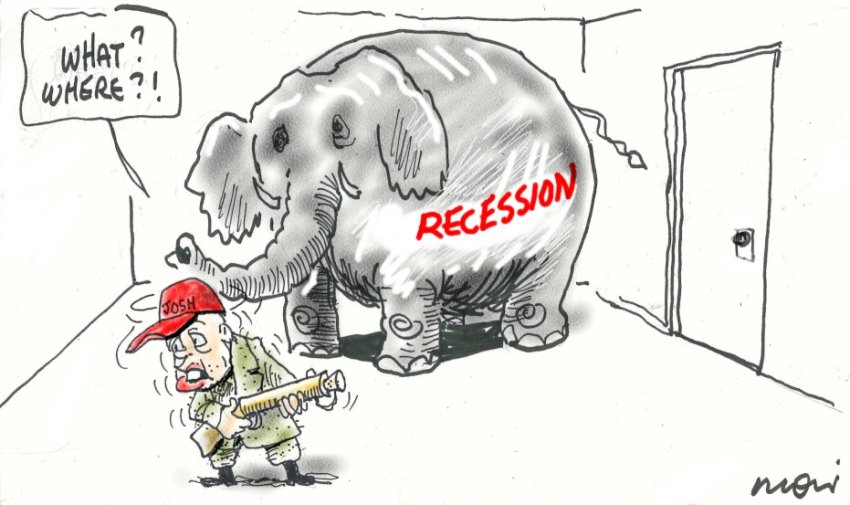
National accounts figures released by the Australian Bureau of Statistics (ABS) on September 4 show economic growth was slower over the 2018–19 financial year than at any time in the past 10 years.
Growth in exports, particularly iron ore, in addition to population growth, were the only things to stop the economy formally going backwards, ABC News reported.
While the economy is stalling and wages continue to stagnate, profits rose by almost 32% over the year, albeit driven largely by huge gains for mining companies.
Unemployment is at 5.2%, with more than 712,000 people officially registered as unemployed. Significantly, however, 8.4% of those in work — almost 1.1 million people — say they are underemployed and want more hours of work than they can find, according to ABS statistics.
Iron, ore what?
As an export-focused economy, and the world’s third largest carbon dioxide exporter, Australia is dependent on the fate of the international economy.
United States President Donald Trump’s trade war, particularly against China, also has risks for Australia. Australia is the largest exporter of iron ore to China, in addition to being the largest supplier of liquified natural gas (LNG), according to the Australian Financial Review.
The collapse of a tailings dam in Brazil in January, which caused the death of more than 300 people, has led to a sustained spike in the global price of iron ore. Iron ore is now trading internationally at $91 a tonne, significantly higher than federal treasury forecasts, which underpinned the 2019–20 federal budget handed down by Treasurer Josh Frydenberg in April.
The result has been a huge rise in payments to the federal government, giving the federal budget a short-term sugar hit, and possibly pushing it into an early surplus.
China is responding to the economic impacts of Trump’s trade war by spending on infrastructure to stimulate an economy that might otherwise falter with the decline in US demand for its manufacturing exports. However, economic growth in China fell to its lowest rate in almost 30 years, according to figures released in July, the New York Times reports.
The slowdown in the Chinese economy has Australian exporters, including universities and mining firms, worried about what faltering growth in China — let alone a recession — might do to Australia’s economy.
According to the Sydney Morning Herald, a decline in China’s growth rate from 6.5% to 3% could cause a recession in Australia and a rise in unemployment from 5.2% to 9.3%.
While the federal budget for 2018–19 may have unexpectedly climbed into surplus owing to the spike in iron ore prices, the real economy, in which working people live, is slowing.
Consumer spending is weak, with discretionary spending (new cars, holidays) particularly impacted. Sales of new cars declined consistently over the 14 months to June, while airline Virgin plans to cut 750 jobs after a $349 million loss, according to the ABC. Woolworths is set to close 30 unprofitable Big W stores after its profits fell 7%, and Coles profits fell 9%, according to The Guardian Australia.
In June, building construction as a whole declined for the 11th month in a row. The decline is sharpest in the apartment building industry, which has contracted for 16 continuous months. The house building industry has been growing weaker for 12 months. The outlook for construction workers is becoming increasingly grim.
What’s the government doing?
“If you have a go, you’ll get a go”, Prime Minister Scott Morrison said in an April press conference announcing the date of the May 17 federal election. Morrison’s entrepreneurial call to arms was arguably one of the factors that helped the Coalition win a slim parliamentary majority. It is predicated on the idea of rising economic growth providing opportunity for those willing to “have a go”.
National accounts figures, artificially boosted by the inflated price of iron ore, have kept a smirk on Frydenberg’s face. Even while the economy has slowed, it has continued to grow. Australia is now into its 29th year of uninterrupted economic growth, a record among developed economies.
On July 2, the day the Reserve Bank of Australia (RBA) reduced official interest rates to a historic low of 1%, RBA Governor Philip Lowe called on the federal government to do more to stimulate the economy.
According to The Guardian Australia, Lowe told a dinner attended by the top end of town in Darwin: “It is appropriate to be thinking about further investments in [infrastructure], especially with interest rates at a record low, the economy having spare capacity and some of our existing infrastructure struggling to cope with ongoing population growth.”
Nevertheless, the federal government has refused to act, instead calling on business to reduce the amount of money they are paying in dividends and invest more as a means to help the economy grow. According to ABC political editor Andrew Probyn, the government is caught in a “surplus obsession” due to an “ideological obsession” it shares with Labor “about being in the black”.
The result could be devastating for Australian workers.
Higher iron ore prices will not last forever. Inflated iron ore prices are likely to encourage higher-cost producers in China, Indonesia and Malaysia to re-enter the market, according to the ABC.
Trump’s trade war will also ultimately have an impact, reducing international demand and causing prices to fall.
The result could be that the Australian budget surplus is a very short-lived phenomenon, even without the government being forced to raise spending to buoy a flagging economy.
Whether it is this year or not, sooner or later the federal government will be faced with a significant choice: either greatly raise government spending to stimulate a flaky economy, or introduce severe austerity, cutting government spending on health, education and welfare to the bone, to defend an increasingly unlikely budget surplus.
Working people beware.